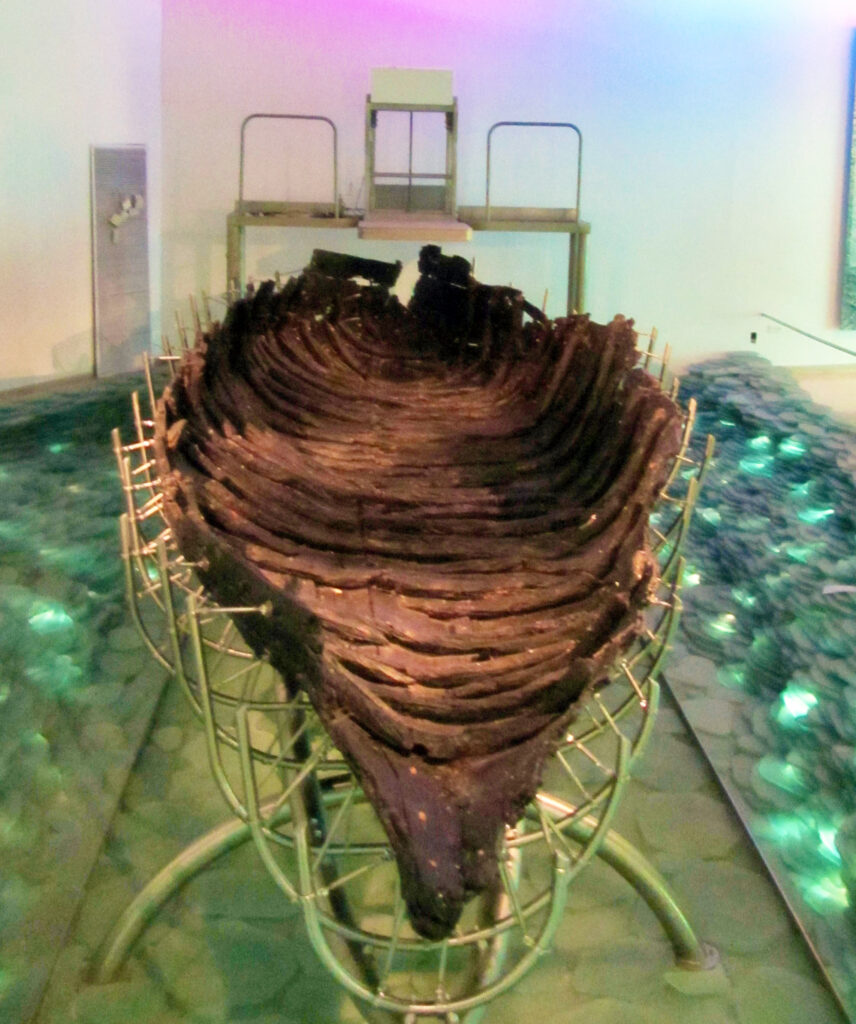 One of the arguments of critics regarding the accuracy of the records of the life of Jesus was the size of boats on the Sea of Galilee. Surely, they said, the New Testament claim that all twelve of the apostles plus Jesus Himself were in a boat together was false (John 6:16-21). The consensus of archaeologists was that fishing boats at the time of Jesus were not that large.
One of the arguments of critics regarding the accuracy of the records of the life of Jesus was the size of boats on the Sea of Galilee. Surely, they said, the New Testament claim that all twelve of the apostles plus Jesus Himself were in a boat together was false (John 6:16-21). The consensus of archaeologists was that fishing boats at the time of Jesus were not that large.
A severe drought gripped Israel in 1985 and 1986. Predictably, the Sea of Galilee shrank. Wide expanses of the bottom of the lake, normally covered with water, were thus exposed.
In January 1986, two amateur archaeologists observed the oval outline of a boat buried in the mud. Israeli professionals discovered “mortise-and-tenon” joints, proof that the boat was ancient. This was the first time an ancient boat had been discovered in the Sea of Galilee. How old was it? Several dating methods were used to arrive at a date ranging between the late first century B.C. and the first half of the first century A.D. The author concludes, “It does seem that the boat fits the time range and is of the type that would have been used by Jesus and His disciples.”
The excavation was a stressful ordeal, lasting eleven exhausting days and nights. Once the boat was “packaged,” water was pumped into the excavation pit. Buoyed by the polyurethane foam inside and out, the fragile boat (having the consistency of wet cardboard) floated at lake level. For the first time in two millennia, the boat “sailed” again to the cheers of an onlooking crowd.

In the museum at Tiberius, the boat was treated for over five years with a synthetic wax called PEG (polyethylene glycol) to replace the water in the wood cells. Today it is exhibited for hundreds of thousands of tourists each year at the Yigal Allon Museum at Kibbutz Ginnosar.
The boat is 26½ feet long, 7½ feet wide and 4½ feet high. It has a rounded stern and a fine bow. Both the fore and aft sections were probably decked in, although the boat was not preserved to this height. The boat must have had four rowers and a helmsman—a crew of five. It could be both sailed and rowed. It was probably used primarily for fishing but could also serve for transportation of goods and passengers.
How many people could this boat hold? In one passage in Josephus (Jewish historian) he refers to himself, some friends, and seven combatants in a boat, which, with a crew of five, would total at least fifteen. In another passage, he tells of ten men of Tiberias who were transported in a single “fishing boat.” With a crew of five, this too would total fifteen men.
A boat like this could easily accommodate Jesus and His twelve apostles, who regularly used boats on the Sea of Galilee. (See Matthew 14:22–32; Mark 4:35–36; 6:30–32; 8:10; Luke 8:22; John 6:16–17.)
An interesting detail is recorded in Mark 4:37 which is enlightened by the boat’s structure. The text says that “Jesus was in the stern, asleep on a cushion” (Mark 4:38). The definite article in the Greek text of this verse, used in relation to “the” cushion, indicates that this was part of the boat’s equipment, likely a sandbag. (It was not just “a” cushion that happened to be there.) Sandbags were used to trim the boat when under sail; when not in use, they were stored beneath the stern deck. They were a convenient “pillow” for Jesus as he slept beneath the stern platform, the area in the boat most protected from the elements.
As we continue “In the footsteps of Jesus” we discover that archaeology has again confirmed the historicity of His life and times. The evidence reveals that the critics’ assumptions about the size of boats on the Sea of Galilee were wrong.


